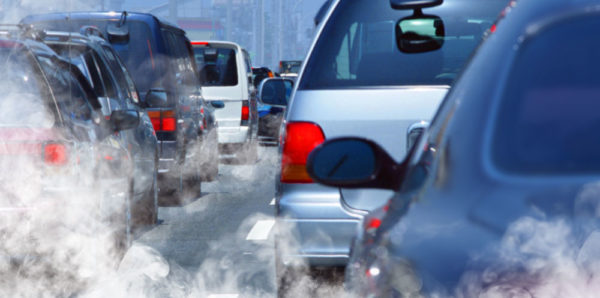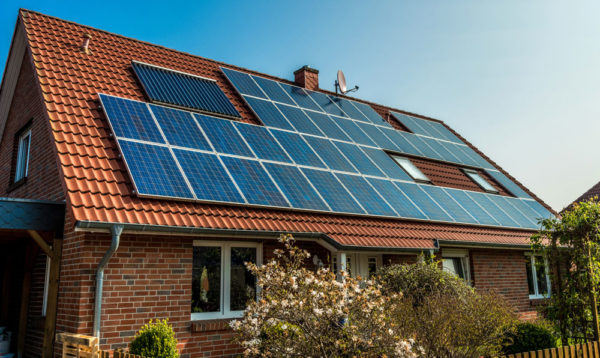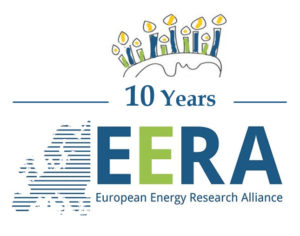The Vice-President of the European Commission, Maroš Šefčovič is in charge of the Energy Union.
He has designated 2018 as the year when the energy policy will provide engagement by all European stakeholders for the Energy Union.
This means engagement by all stakeholders in Europe being given a framework that can make this happen.
In the 3rd report on the Energy Union we can read “Renewables, energy efficiency, climate action and clean energy innovation and ensuring the right price signals in the market, is a precondition to attract investments in modernising the entire EU economy to the benefit of citizens”. This was strengthened by the agreed negotiating position of the Council on a regulation establishing the framework for an internal electricity market across the EU in December last year.
There we can read: “EU electricity market has been transformed by digitalisation, renewables and active consumers and we need new rules to fit the new reality. With today’s decision, we have taken a huge step to make that happen.” (Kadri Simson, Minister for Economic Affairs and Infrastructure of the Republic of Estonia.



Opportunities that arise
This points towards the opportunities that arise from the greening of the economy and the energy sector in particular and that the citizens must have an active role in this transformation.
Europe spends more money in importing energy (€350 Bn/yr) than the trade surplus of all EU countries combined.
And, due to the way the energy sector is presently organized, a large part of these imports create greenhouse gas emissions that Europa has promised to reduce heavily by 2030 and 2050.
The direction of travel is clear:
- becoming more self-sufficient in energy
- develop green technology and systems
- fulfil the Paris Agreement.
No small feat but we shall also engage the citizen – the customer in this endeavor.
Citizen and customer perspective
The problem is actually the solution, it is impossible to undertake these efforts without the citizen and customer perspective. Europe is a free trade market and we rely on market mechanisms to provide solutions once market failures are rectified. From an EERA perspective these are issues that our Joint Programme on Energy, Economy and Environment (E3S) is grappling with.
How do citizens engage in the transition towards a sustainable energy system and how can science and policy support them in doing so?
Think of Jean Phillipe living in central Paris, Majorlein living in rural Netherlands (if there is such a thing), Maria in Barcelona, Nikolay in Sofia and Erja in northern Finland. What are their drivers for engaging in the transformation? Let me transfer some ideas about this.
Jean Philippe
Jean Philippe wants good living conditions for his family, excellent infrastructure and easy mobility whilst living in a world metropole. The answer to these requests is delivered by smart cities and communities. Living conditions is about a clean and healthy environment- devoid of the plagued air pollution, with lower levels of noise. If this can be done more efficiently and, in addition, with lower cost it is a great proposition to Jean Philippe.
Marjolein
Marjolein has a large farm and wants to have more autonomy for her family’s energy utilization and supply. Green technology now offers plug and play solution to use the farm’s waste to produce electricity and heat- possibly also fuels for the machinery. And the roof tiles (of which she has several 100’s of m2 at disposal) can provide electricity at prices competitive with electricity sourced from the grid. Well, Marjolein supports this wholeheartedly- who would not when it even comes at a lower cost?
Maria
Now, Maria in Barcelona lives in an apartment and pays her bills monthly for gas and electricity. Her means of personalized transport is a cheap electric scooter. Demand is booming for these around the world.
The invention of building integrated PV’s are going to make a difference, this can be applied in new windows creating cheap energy for lighting and heating/cooling reducing energy bills. This comes at a cost however which makes it at present challenging to retrofit. But Maria has bought this new PV transparent tape which can be fixed to the windows and provide for basic lighting being stored by an affordable Li-Ion battery.
In the future, the city is likely to have much less traffic due to autonomous transport and on the fly solutions for mobility. Maria is going to take part in the engagement by preparing for this transfer and investing in services and smart solutions rather than the lock-in situation at present. She will also be part of a crowd funding initiative to establish a community owned solar plant.
Nikolay
Nikolay in Sofia praises the improved supply situation for electricity. The financing of energy efficiency reforms in buildings has improved comfort and engaged him in the change or you could say it is resting upon him as a citizen to respond and invest sustainably.
But he is not happy with the air pollution situation which must be improved, it simply not healthy. He shares the same goals for his family as Jean Phillipe, Marjolein and Maria. There must be a shift in mobility and the way heat and electricity is provided and it will be driven by young people taking conscious choices for the future. He is all in for a transition that will bring a better health and better life- who wouldn’t?
Erja
Up north in Finland the Energy Union may seem distant. However, Erja has already engaged in the transformation. Digitalisation has come far and the energy use can now be controlled by herself and she can even order the type of power she would like to buy. Bioenergy is nothing new to the Finns and new ultra-low and high efficient stoves are providing comfort and energy independence. Many people live in single unit dwellings in the Nordics and now the car is supplied with power from the roof tiles of her garage. It came as an option from the manufacturer.
Even if rural areas demand other means of mobility than cities there are superchargers and charging stations at all the major roads. Her neighbour has just acquired a hydrogen fuelled truck which can provide clean heavy-duty service. It is really a relief to avoid the fumes especially during cold starts of the neighbour’s previous truck. Some people say that the neighbour is passenger in the truck and that it drives itself.
The transition is a clear win-win situation
So- these partly naive but representative stories show clearly that the transition is a clear win-win situation for the citizen – and this is growing in attention. But it does not come by itself – it must be pursued and debated, researched, piloted and demonstrated and taking into applications. This is also what Missions are about in the future FP9 – how to chime into the mind of the citizens and to push us to give short pitches of what good energy research can do.
Understanding vibration and wake fields in wind turbine blades is perfectly understandable to the wind congregation but not to Marjolein or Nikolay, as an example. But if the pitch is “clean and cheap electricity to the consumers” it makes sense.
We need to regain the attention for research and innovation in the society and this is not achieved by using academic language or something obscure in a far future.
We need to support the European citizen in their engagement in the energy transition by practical means and by showing which benefits they as a society can gain.
And we have not yet even mentioned the effect of global warming and climate change. Many Europeans are concerned when Christmas is celebrated with 24 degrees in parts of Spain, while floods are devastating infrastructure in central Europe.
Resilience is so important that it cannot be overestimated.
Why is EERA concerned about this?
As the R&D vehicle of the SET-Plan we are well suited to deliver on these possibilities. Research and development will play a key role in providing for new technologies and systems and we must put the customer, the citizen in the center.
EERA celebrates its 10th anniversary this year and this is an approach we have followed from the very start.
We will take steps to provide a mission oriented approach to the energy challenge and engage across Europe in co-ordinating and catalysing action. At the core is the citizen and we have contributed to mission statements for the next framework programme.
We are also targeting to boost our communication activities to bring out the good news and to make people take informed decisions. The low carbon society will only become a reality when the decisions citizens take are automatically those which bring about sustainable solutions.
For this to happen the messages must be clear, provide value and make sense. It’s like moving to digital newspapers and individualized content, like car sharing and pooling systems – it simply makes sense.
Let’s make sustainability plain sense for the European citizen.


0 comments on “2018 – the year of engagement for the Energy Union- and that’s YOU actually”